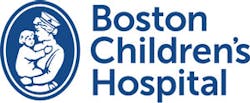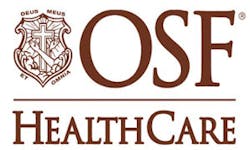Supply Chain’s latest Elite 8 pursuing, embracing larger roles for data, doctors
The healthcare supply chain times, they are a-changin.’ Just don’t think of it as a revolutionary Bob Dylanesque anthem but as an evolution of expectations.
As Supply Chain expands the breadth and depth of its influence and reach within healthcare organizations, it expands its scope and responsibilities, too. And with that, accountability.
Adding Purchased Services into the mix should propel Supply Chain to become the largest expense category over labor within a healthcare organization by 2025 without dispute.
This new status upgrade promises to put more pressure on the caliber of professional leading and supporting Supply Chain operations as well as spread open the floodgates for great data demands and higher clinical executive participation.
The December edition of Healthcare Purchasing News typically features its annual snapshot of “Supply Chain Operations Worth Watching.” HPN solicits nominations from all sectors of the industry and conducts its own background research to highlight briefly.
This year, eight organizations, spanning eight states from the East Coast to the West Coast and several areas in between, join 70 other ongoing healthcare supply chain superstars profiled by HPN since 2011.
Based on this year’s nominations, which hailed from suppliers, group purchasing organizations and consulting firms, some noteworthy trends are bubbling to the surface.
- Several facilities recognized in earlier SCOWW articles (see page 13 for the full list) either were nominated again based on their own merits, which indicates these elite organizations continue to develop and improve rather than rest on their laurels, or they were nominated again as part of larger integrated delivery networks that absorbed them, which points to a continuing consolidation wave that isn’t impeding progress.
- The majority of nominated organizations appear to be centralizing — and standardizing sourcing, contracting, purchasing and logistics services with many decisions being made corporately by strategic-minded senior executives.
- Healthcare organizations are stocking their staff rosters with data analysts and investing in and using “data dashboards” to collect, refine and present real-time, cogent and tangible arguments for Supply Chain’s influence, participation and usefulness in clinical, financial and operational matters. For years, Supply Chain has heard the clinical defensive phrase, “Show me the data.” They get it. And now they’re delivering. Better watch out.
- Armed with data analysts and dashboards as budgetary weapons against free-wheeling and unfettered clinical product spending, Supply Chain leaders are solidifying and strengthening their ties with other clinicians — specifically physicians and surgeons — but not in a hammer-fisted, heavy-handed way. Think of it as more of a conciliatory, politically savvy form of facilitation, tinged with strategic passive aggressivism. They’re using the data for which doctors have clamored as a persuasive maneuver to influence mindset changes. In short, they win over the doctors to make the necessary decisions and enable them to take the credit. For top-tier hospital and IDN Supply Chain organizations, this may not be new, but this philosophy is seeping out to the masses and will redirect clinical supply chain decision-making going forward.
- More Supply Chain organizations are fortifying their staffs with clinicians. While that tactic isn’t new as nurses have worked in Supply Chain for decades, largely overseeing value analysis and product evaluation projects, the strategy these days is different. Why? Doctors represent the newest clinicians to join Supply Chain with some serving in primary and secondary leadership roles and others as clinical support specialists to influence colleague behaviors and opinions.
As always, if your organization — or one you think should qualify — didn’t “make the list,” be sure to let us know and then plan how to showcase the deserving organization for consideration in the 2018 compilation.
Peruse the latest Elite list in alphabetical order by name for highlights on what they’re doing and why they matter.
Allegheny Health Network, Pittsburgh
(https://www.ahn.org/)
Back in the late 1990s, West Penn Allegheny Health System’s Supply Chain department dove wholeheartedly into retail-style strategic sourcing with UPC labeling well before GS1 and UDI became household terms. They were breaking kits, packs and even products into their component parts to determine the most cost effective way to meet internal customer demands. But since that time, competition in the Pittsburgh metropolitan area fiercely intensified, motivating the growth and formation of IDN Allegheny Health to centralize supply chain operations for pharmacy, medical/surgical products and surgical pack assembly within a consolidated service center. A specialty pharmacy and a 340B drug pricing program for nearly 80 hospitals in Pennsylvania and West Virginia were also created. Allegheny also established a regional GPO concentrating on physician preference items and is working closely with payer Highmark to better manage supply chain decisions.
Boston Children’s Hospital, Boston
(http://www.childrenshospital.org/)
The Supply Chain team at award-winning Boston Children’s set out to increase the efficiency of its contracting processes by examining in-depth what they were buying, from whom, how and when, identifying pain points along the way. The team worked with Prodigo Solutions technology and advisers to plot and develop software-based functional workflow patterns in their contracting processes through a centralized database instead of individual systems by department. They also focused on minimizing, if not eliminating, off-contract spending to control costs by creating an electronic marketplace for online price comparisons, product research and supplier-direct ordering. By accessing the marketplace, end-users easily can compare what it would cost to buy necessary products and services from an established contract with an approved supplier vs. off-contract from competitive suppliers. They implemented a just-in-time distribution system made that much more efficient through data accuracy and data synchronization across information technology platforms (including billing and medical records), along with the electronic capability of tracking product expiration dates and serial numbers for recalls and traceability.
Norton Healthcare, Louisville, KY
(https://nortonhealthcare.com/)
The five-hospital system that also includes seven outpatient centers and 12 immediate care centers takes clinical aggregation, effectiveness and integration seriously. In fact, by participating in several Premier initiatives, such as a collaborative IDN program and committed performance programs, Norton’s Supply Chain team partnered with multidisciplinary teams to garner more than $5.2 million in savings during the last three years for physician preference items. The teams included physicians, infection preventionists, respiratory therapists and wound care nurses, among others. Together, they examined clinical evidence, clinical outcomes and utilization data to show physicians that product variation can be costly and how enhanced value analysis strategies can identify products and services that generate favored patient outcomes. Under the banner of performance excellence and care continuum strategies, the Supply Chain team successfully built trust with clinical leaders and shared accountability in decision-making. Through Blue.Point and McKesson Explorer databases, they are striving for a $15 million goal in cost improvements via standardization and utilization efforts in such areas as orthopedics, blood utilization and negative pressure wound therapy in fiscal 2018 with $2.2 million in savings.
Novant Health, Winston-Salem, NC
(https://www.novanthealth.org/)
This southeastern IDN integrates its Supply Chain and Strategic Sourcing operations with category management processes, data analytics and clinical partnerships. One of their key pursuits has been, and continues to be, reducing non value-added clinical variation through a variety of processes and tools designed to incorporate physician leadership into process and product decisions and share accountability with them. In fact, through their cross-functional Clinical Variation Reduction Team, administrators and physicians collaborate by targeting a variety of DRG procedures to identify and improve product standardization and care delivery for patients. Physicians remain deeply embedded within supply chain processes — not just for initially evaluating new products, services and technologies, but also for ongoing performance issues involving accepted products, services and technologies and how they affect patient outcomes. Through open and honest dialogue, physicians and Supply Chain communicate directly about conversions, implementations and usage issues.
Ochsner Health, Baton Rouge, LA
(https://www.ochsner.org/)
This Louisiana IDN represents one of the few supply chain award-winning healthcare organizations (an Ammer Level 4 Supply Chain Organization designation — second highest — from Bellwether League and a spot on Gartner’s Top 25 Healthcare Supply Chain list in 2016) that have pushed through the boundaries of traditional expense management and into revenue contributions. Ochsner’s Supply Chain has been instrumental in the planning and development of the new Ochsner Center for Molecular Imaging as well as its provider of products and services. The Supply Chain team continues to expand and grow its regional purchasing coalition Strategic Sourcing Partners that provides contracting, network aggregation and cost reduction programs for itself and 74 other member facilities in the “gulf south” area, exceeding $155 million in annual purchasing volume. The team’s ongoing Orthopedic Transformation program, fortified through a partially owned startup venture called VectorMed, continues to help surgeons manage their purchasing costs, usage behaviors and patient outcomes for total joint procedures. Supply Chain also created a dedicated Purchased Services team that oversees and manages more than $500 million in expenses.
Sanford Health, Fargo-Sioux Falls, SD
(http://www.sanfordhealth.org/)
The Supply Chain team at Sanford Health is so dedicated to accountability that it links its own operations to the overall culture of the enterprise and meets twice yearly to evaluate and measure its performance. Key initiatives include advancing clinical product and practice standardization, and reducing “unfavorable” special orders and stock-keeping unit variation across its 43 healthcare facilities within a 300,000-square-mile territory, anchored in Fargo and Sioux Falls, SD. Sanford Supply Chain uses data dashboards to drive workflows and efficiency. They display such statistics as average hours from release to pick, fill rates, items without use in the last 12 months, and turn rates, from an enterprise perspective down to individual market segments. Supply Chain also helped develop and implement a software product to track usage data in procedural areas to facilitate analysis of cost-per-case details. Using software technology, Supply Chain also developed a location identification system to track the internal routing of products, employees and correspondence for more efficient resource deployment.
Scripps Health, San Diego, CA
(https://www.scripps.org/)
Roughly two decades after Scripps Health earned HPN’s “OR Department of the Year” award specifically for surgical supply chain performance improvement, the San Diego-based IDN continues to make strides in the areas of clinical decision support and product standardization and data-driven strategies and tactics for supply chain operations. Supply Chain replaced more than 20 product review committees with a single clinically focused value analysis team that uses outcomes-based evidence to influence product and service decisions. An award-winning and practicing surgeon (See HPN’s P.U.R.E. awards, July 2017, https://www.hpnonline.com/hpn-hall-fame/#PURE) serves as medical director of the value analysis team that works directly with clinicians, physicians and surgeons on developing clinical pathways, standardizing order sets and improving and implementing best practices. Clinical and financial results are tracked and transparently shared within the physician community. During the past year the value analysis team recorded more than $6 million in savings and anticipates another $5 million in savings in the coming year from utilization changes. For Supply Chain, lean (methodologies) and clean (data) motivate success in the areas of contracting, purchasing, logistics and supply chain IT linked to clinical, patient and surgical systems as well as supplier systems. As examples, Supply Chain reduced low-to-no-use inventory by $2 million, tracks productivity by end user and enables real-time data access to expedite business decisions.

Rick Dana Barlow | Senior Editor
Rick Dana Barlow is Senior Editor for Healthcare Purchasing News, an Endeavor Business Media publication. He can be reached at [email protected].












